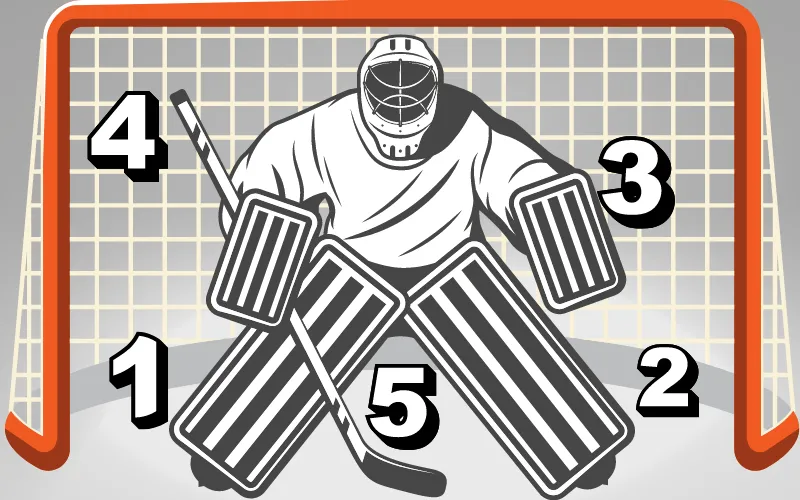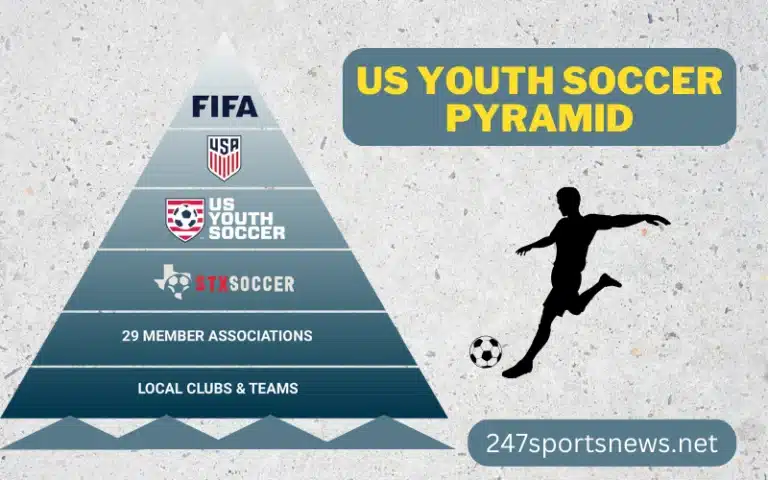What is the Five Hole in Hockey? | Comprehensive Guide About All
It is incredibly challenging to score in Hockey, especially when competing against an experienced and excellent goaltender. The five-hole is one method by which a player can score a goal.
So exactly what is the five-hole in Hockey? One of the five main holes that players shoot from to score is the five-hole, which is the area between the goaltender’s legs. We’ll discuss the five-hole in further detail in this article.
What is Five Hole and How is it Played in Hockey?
In ice hockey, “Five Hole” refers to a particular scoring chance for an offensive player against a goaltender. Each region of the “net” or “goal” in Hockey is designated with a number for reference purposes. The space between the goalie’s legs, directly across the ice, is known as the “Five Hole.”
A player is described as playing for the “Five Hole” when they attempt to score by putting the shot through the legs of the goalie and into the net. Goalies frequently find it difficult to defend this area because they have to act fast to close their legs and stop the shot from passing through.
Why is it called 5 Hole in Hockey?
The numerical system used to identify the many openings on the goaltender’s net is where the name “Five Hole” in hockey terminology first appeared. The Five Hole is the fifth hole in this system, which assigns numbers for reference purposes to each opening. The numbering scheme is as follows:
- High glove side (Top Left)
- Low Glove Side (Bottom Left)
- Sticky Side Up (Top Right)
- Sticky Side Low (Bottom Right)
- Five holes (Between the Legs)
The area between the goalie’s legs is called the “Five Hole” since it corresponds to “5”. The term has gained popularity in hockey terminology to refer to the space between the goaltender’s leg pads, frequently the target of offensive players looking to score goals. It’s a quick and simple way for players and spectators to discuss a particular goal chance during a game.
How many Holes are there in Hockey?

The various scoring locations or openings on the goaltender’s net that players try to score goals from are referred to as “holes” in Hockey. Five main holes for scoring are mentioned above.
Players try to boost these scoring opportunities based on the goaltender’s location and movements. The offensive player’s mission is to rapidly and accurately shot the puck into one of these openings, while the goaltender’s goal is to close off these gaps and stop goals successfully.
In conclusion, there are five holes in a hockey goal, each representing a specific area where players try to score goals. Offensive players and goaltenders must understand these concepts to strategize and play the game effectively.
What is a Five-Hole Goal in Hockey?
A skillfully executed offensive play that uses the gap between the goaltender’s legs to score results in a five-hole goal.
The gap between the goalie’s legs is known as the “five-hole.” A “five-hole goal” is what is used to describe when an offensive player successfully shoots the puck through this opening and into the goal. Goalies may struggle to stop shots through the five-hole because they must act fast to close their leg pads.
The attacking player taking the shot must use timing and accuracy to catch the goalie when the five-hole is open, frequently when the goalie moves sideways or lowers into a butterfly posture. Goaltenders must have rapid responses and foresight to properly close the gap between their leg pads when defending against the five-hole shot.
What is the 6 Hole in Hockey?
“six-hole” is frequently used ironically to refer to a fictional scoring area in Hockey. It is positioned below the crossbar and above the goalkeeper’s shoulders, thereby adding a sixth hole on top of the five already present that we discussed before.
The six-hole idea is not as well known or utilized as the conventional five-hole format. It’s a playful terminology that can be used to amuse audiences while talking about hockey scoring areas. The six hole is not formally a part of the vocabulary used in the sport, even though the five holes signify particular target areas where players try to score.
What is the 7 Hole in Hockey?
The terminology “seven-hole” and beyond are neither generally used nor accepted in the context of Hockey. The five main scoring spots in traditional Hockey are referred to as “holes” names of that five holes are given and discussed above in this article.
Five holes, or separate target regions on the goaltender’s net, where players try to score goals, are where the numbering system ends. Any myths about a “seven hole” or other higher-numbered holes are often intended as jokes or superficially; they do not belong to the accepted vocabulary used in discussions about Hockey. Beyond the five approved holes, the sport does not acknowledge the idea of additional holes.
There is a 15-minute interval between each of the three 20-minute playing segments of the game. Hockey games may conclude in a tie without an overtime period to act as a tiebreaker.
Most hockey fans should be familiar with this expression, which describes crazy shots that put the ball in tight spaces for goals. A player with this skill set is known as a sniper.
Hockey glass keeps the puck in the rink so that the game doesn’t get stopped. Another advantage of hockey glass is keeping the cold air inside when the floor is soaked during setup.
The defense takes a 16-yard hit when the offensive team plays the ball over the backline. The spot where the ball passed the backline is 16 yards from where the free hit is taken.





